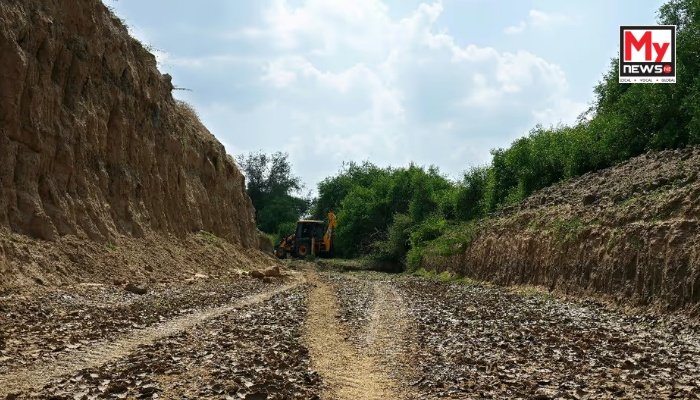Assam Grapples with Relentless Riverbank Erosion, Displacing Thousands
Guwahati: Assam is facing an escalating crisis as relentless riverbank erosion continues to consume vast stretches of land, altering the state’s geography and displacing thousands. The state holds the unfortunate distinction of being India’s most erosion-affected region, with extensive land loss recorded over the decades.
According to official data from the Assam State Disaster Management Authority (ASDMA), approximately 386,476 hectares of land have been lost since 1954, nearly 7% of the state’s total area. The Water Resources Department estimates an even more alarming figure, placing the total land loss at over 427,000 hectares since 1950, equivalent to 7.4% of Assam’s total landmass.
The state loses an average of 8,000 hectares of land annually to erosion, forcing thousands of families to abandon their homes and farmland. This steady land depletion has not only reduced Assam’s geographical footprint but has also intensified economic distress in rural communities.
Assam is home to nine of India’s 22 most erosion-affected districts, making it the most vulnerable state in the country. The most affected districts include Goalpara, Dhubri, Baksa, Kokrajhar, Chirang, Bongaigaon, Udalguri, Nalbari, and Barpeta. These regions have borne the brunt of erosion, with villages disappearing, farmlands turning barren, and infrastructure crumbling.
Recent erosion data (2024) reveals that between May and August 2024, Assam lost 186.41 hectares of land across 24 districts, with nine districts facing severe erosion. The affected districts include Dhemaji, Dhubri, Baksa, Kokrajhar, Chirang, Bongaigaon, Udalguri, Nalbari, and Barpeta.
The relentless erosion has led to mass displacement, infrastructure damage, and economic setbacks. The destruction of agricultural land has drastically reduced productivity, forcing many rural residents to migrate in search of alternative livelihoods.
The government has acknowledged the severity of the erosion crisis, implementing multiple flood and erosion management programs. However, despite these efforts, challenges persist, including inadequate data collection, bureaucratic delays, and short-term measures.
Experts advocate a multi-pronged strategy to mitigate erosion and safeguard Assam’s landscape. This includes advanced erosion control measures, permanent infrastructure, river channelisation, community participation, technology-driven monitoring, and policy strengthening.
Assam’s battle against riverbank erosion is a race against time. Without sustainable interventions, the state risks further land loss, economic devastation, and mass displacement. A coordinated approach – involving government agencies, scientific experts, and local communities – is essential to curb erosion, protect Assam’s riverine ecosystem, and secure a stable future for its people.
Read More: Meghalaya: Shillong MP Calls for Removal of NEHU Vice-Chancellor

